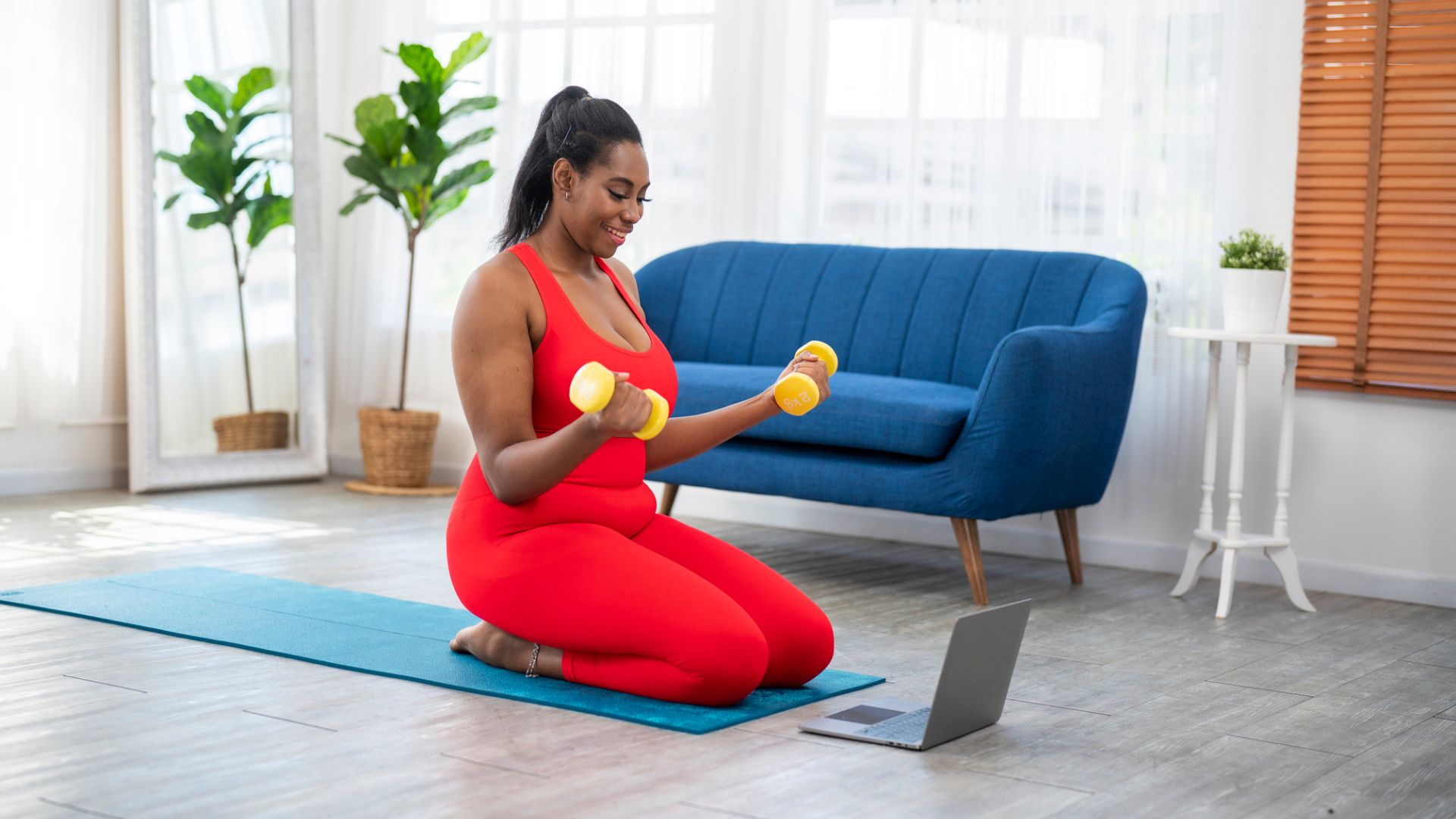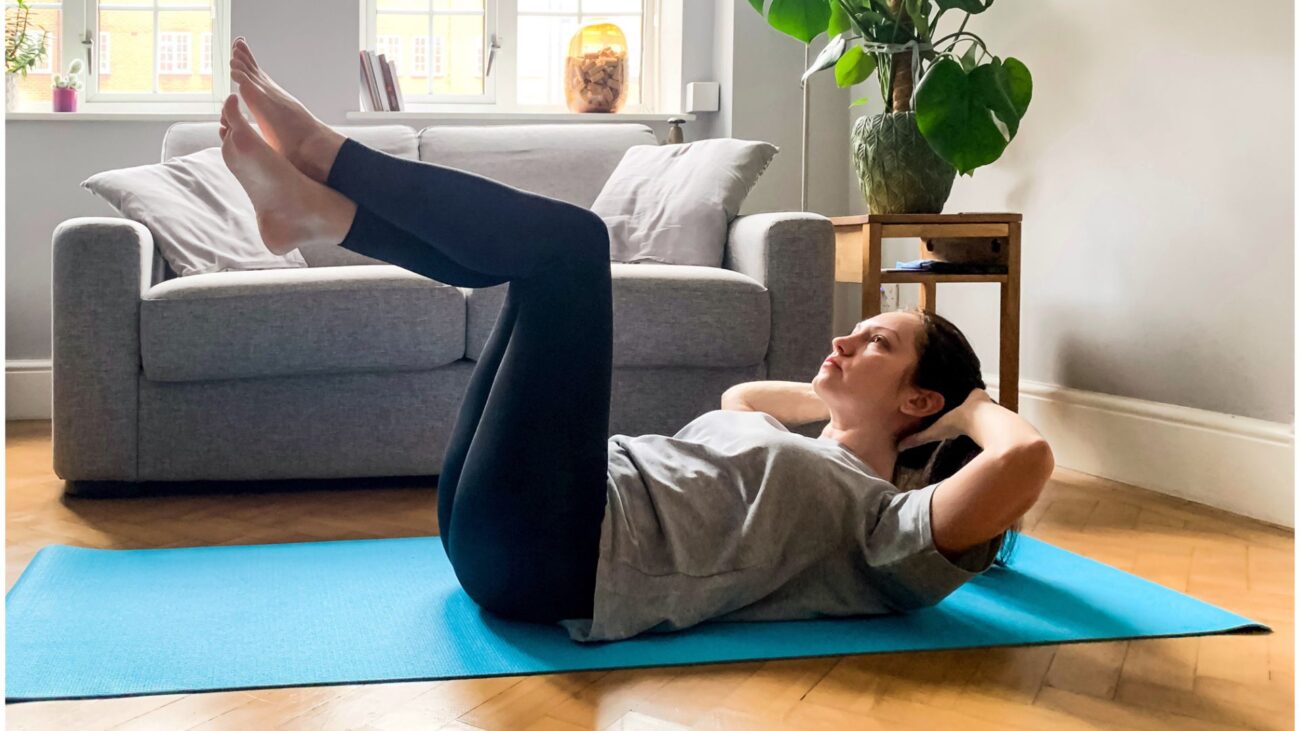Blog
Three moves and 10 minutes is all you need to build stronger arms and abs

Most workouts tend to focus on the big wins: the major muscle groups like the glutes, quads, hamstrings, chest and back involved in moves like squats, lunges, push-ups and pull-ups.
As a consequence, smaller muscle groups—often referred to as accessories—can be overlooked or under-trained, resulting in weak links that hamper your progress.
The most common example of this is forearm and arm strength. If your grip is sub-par, you’re unlikely to be able to perform a deadlift that’s a true reflection of your absolute strength.
The answer to this conundrum, according to experienced trainer Alex Marks of London PT studio On Your Marks, is to include accessory finishers at the end of your regular workouts.
Use this 10-minute finisher to build strong arms and abs
Marks’ tried-and-tested formula for the arms and abs lasts 10 minutes and involves just three exercises performed on repeat. One for the biceps and forearms, one for the triceps and one for the core.
“Your objective is to create 10 minutes of near-constant tension,” he tells Fit&Well. “The goal is not to simply move from A to B, but to move with control, poise and tension—not aggression or momentum.”
That means taking your time with each exercise and picking a weight that allows you to execute every repetition with near-flawless technique.
If you’re a relative beginner, I’d suggest breaking each exercise down into 60 second blocks. Start by performing 30 seconds of exercise 1, then rest for 30 seconds, then move onto exercise 2 and repeat.
If this feels comfortable, you can progress to 45 seconds of work and 15 seconds of rest, then 60 seconds of work and zero rest.
The end goal, says Marks, is to get to a point where you can keep pushing to failure on each exercise for a continuous circuit of pure, unadulterated hypertrophy (muscle building).
1. Dumbbell biceps curl
Watch On
- Hold a dumbbell in each hand by your side with palms facing in.
- Brace your core and squeeze your glutes to keep your body stable.
- Curl the weights up toward your shoulders, rotating your palms to face your chest. Make sure your elbows do not move from the side of your torso.
- Squeeze your biceps hard at the top of the lift, then lower the dumbbells slowly under control for a count of two seconds.
- As fatigue builds, performing these biceps curls on alternate sides can make this feel slightly easier.
2. Bench triceps dip

Watch On
- Sit on the edge of a bench with legs straight and heels on the floor.
- Hold the edge of the bench with fingers pointed forward and retract your shoulders to engage your upper back muscles.
- Keeping your elbows tucked in close to your body, slowly lower yourself off the bench until your arms bend 90˚.
- Press through your palms until your arms straighten and repeat.
- Keep your bum close to the bench throughout to reduce pressure on your shoulders.
- Make this move easier by bringing your legs closer and bending the knees, or harder by keeping your legs straight.
3. Bench reverse crunch

Watch On
- Lie on your back on a bench with your knees bent 90˚, gripping the bench either side of your head.
- Press your lower back into the bench to engage your deep core muscles.
- Now use your abs to lift your upper back off the bench while simultaneously lifting your legs.
- Squeeze until your elbows and knees can almost touch, then slowly lower to the start.
Explainer: Accessory exercises
Accessory exercises are like the cherry on the cake. Or—maybe a better analogy—the garnish in your high-protein post-workout burger.
These supplementary moves are intended to be performed alongside the main meat of your workout to keep your body balanced while addressing weaknesses.
For example, the main component of an upper body push-pull session might be built around bench presses and bent-over-rows to target the major muscles of the chest and back.
Accessory exercises could then include dumbbell flyes to target the pecs or face pulls to isolate the rotator cuff muscles, or biceps curls and triceps dips to top up the biceps and triceps.
Typically they are performed after the main lifts of a session, making them a wise choice as part of a focused workout finisher.












